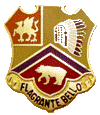Australia and New Zealand
Australia and New Zealand, close allies of the United States and members of the Southeast Asia Treaty Organization (SEATO) and the ANZUS military co-operation treaty, sent ground troops to Vietnam. Both nations had gained experience in counterinsurgency and jungle warfare during the Malayan Emergency and World War II. Their governments subscribed to the Domino theory. Australia began by sending advisors to Vietnam in 1962, and combat troops were committed in 1965. New Zealand began by sending a detachment of engineers and an artillery battery, and then started sending special forces and regular infantry which were attached to Australian formations. Australia's peak commitment was 7,672 combat troops and New Zealand's 552. More than 60,000 Australian personnel were involved during the course of the war, of which 521 were killed and more than 3,000 wounded. Approximately 3,000 New Zealanders served in Vietnam, losing 37 killed and 187 wounded. Most Australians and New Zealanders served in the 1st Australian Task Force in Phuoc Tuy province.
